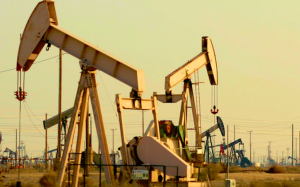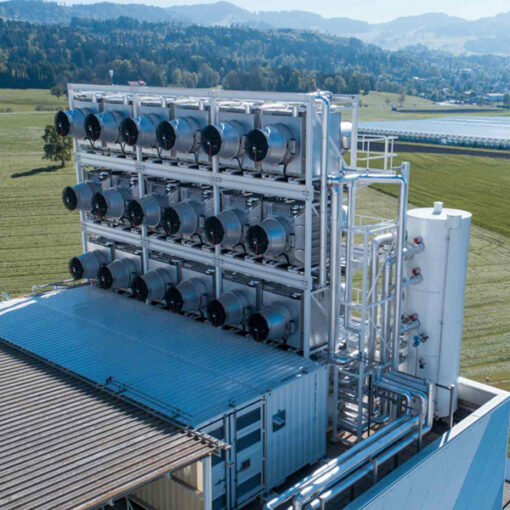By Romany M. Webb
 On Tuesday, November 2, the Biden administration unveiled a suite of measures aimed at controlling methane emissions from oil and natural gas facilities. Key among those measures are new emissions controls proposed by the Environmental Protection Agency (EPA) under section 111 of the Clean Air Act. This is not the first time EPA has used section 111 to control methane. As previously reported on this blog, during the Obama administration, EPA relied on section 111 to adopt so-called “New Source Performance Standards” (NSPS) to control methane emissions from oil and natural gas production, processing, transmission, and storage facilities constructed or modified after September 18, 2015. EPA later rescinded the NSPS, following a review ordered by President Trump. Early in the President Biden’s term, Congress enacted, and the President signed, a resolution disapproving of the rescission under the Congressional Review Act (CRA). This effectively reinstated the Obama-era NSPS. EPA is now proposing to strengthen the NSPS and adopt new emissions guidelines that will, first the first time, regulate methane emissions from oil and natural gas facilities constructed prior to September 18, 2015. Here are four important things to know about the new rules:
On Tuesday, November 2, the Biden administration unveiled a suite of measures aimed at controlling methane emissions from oil and natural gas facilities. Key among those measures are new emissions controls proposed by the Environmental Protection Agency (EPA) under section 111 of the Clean Air Act. This is not the first time EPA has used section 111 to control methane. As previously reported on this blog, during the Obama administration, EPA relied on section 111 to adopt so-called “New Source Performance Standards” (NSPS) to control methane emissions from oil and natural gas production, processing, transmission, and storage facilities constructed or modified after September 18, 2015. EPA later rescinded the NSPS, following a review ordered by President Trump. Early in the President Biden’s term, Congress enacted, and the President signed, a resolution disapproving of the rescission under the Congressional Review Act (CRA). This effectively reinstated the Obama-era NSPS. EPA is now proposing to strengthen the NSPS and adopt new emissions guidelines that will, first the first time, regulate methane emissions from oil and natural gas facilities constructed prior to September 18, 2015. Here are four important things to know about the new rules:
1. EPA no longer believes other federal and state regulations sufficiently control methane emissions from the oil and natural gas industry: During the Trump administration, EPA argued that the methane NSPS duplicated other federal and state regulations, and thus were “redundant.” Specifically, EPA argued that methane emissions from oil and natural gas facilities were adequately controlled through regulations targeting those facilities’ emissions of volatile organic compounds (VOC), because the controls used to reduce VOC emissions also reduce methane emissions. EPA also emphasized that many states have regulations controlling oil and natural gas methane emissions. However, as the Sabin Center noted in comments filed with EPA at the time, those other regulations are extremely limited. As we explained:
“[M]ost large oil and natural gas producing states do not directly regulate methane emissions. Where state regulations do exist, they are often less stringent than [the EPA NSPS]. For example, whereas the [Obama-era NSPS] mandate quarterly leak surveys of all new transmission compressor stations, some state regulations require only annual monitoring. As such, the state regulations will result in less timely leak repair and thus deliver fewer emissions reductions.”
EPA now appears to agree, stating in its proposal:
“As the Federal agency with primary responsibility to protect human health and the environment, the EPA has the unique responsibility and authority to regulate harmful air pollutants emitted by crude oil and natural gas [facilities]. The EPA recognizes that states and other Federal agencies regulate in accordance with their authorities and within their respective jurisdictions but collectively do not fully and consistently address the range of sources and emission reduction measures contained in this proposal. Direct Federal regulation [by EPA] will help reduce both climate- and other health-harming pollution from a large number of sources that are either unregulated or from which additional, cost-effective reductions are available.”
2. EPA proposes to strengthen the Obama-era controls on methane emissions from so-called “new” oil and natural gas facilities: As noted above, the CRA resolution reinstated the methane NSPS for oil and natural gas facilities constructed or modified after September 18, 2015. The requirements imposed by the NSPS have already come back into effect. EPA is now proposing to strengthen those requirements.
Recognizing that significant methane is emitted through natural gas leaks (i.e., because methane is the key component of natural gas), EPA is proposing to require more frequent leak surveys at well sites and certain other facilities. Whereas the Obama-era NSPS required well sites to be surveyed for leaks semi-annually, EPA is now looking at requiring quarterly leak surveys at some sites, and even more frequent surveys at some other facilities. EPA is, for example, proposing bimonthly surveys at natural gas processing plants.
EPA is also proposing to impose additional controls on natural gas venting. Significant venting currently occurs during oil production because natural gas and oil are often co-located. Many oil wells lack systems to capture natural gas, which is instead vented to the atmosphere. EPA is proposing, for the first time, to require oil producers to capture natural gas and route it to a sales line (i.e., for transport to market). Where producers lack access to a sales line, they can use the captured natural gas onsite as a fuel source (e.g., to power compressors or other equipment), or burn it using a “flare . . . that achieves at least 95 percent reduction in methane” emissions. The requirement to flare natural gas, rather than vent it, will reduce methane emissions. It will, however, result in additional carbon dioxide emissions. EPA is not requiring producers to capture or offset those emissions.
3. EPA is proposing first-of-their-kind controls on methane emissions from “existing” oil and natural gas facilities: Section 111 of the Clean Air Act directs EPA to regulate stationary sources that “cause[], or contribute[] significantly to, air pollution which may reasonably be anticipated to endanger public health or welfare.” Under section 111(b), EPA must establish NSPS for new stationary sources of such pollution. Once NSPS are issued with respect to a particular type of stationary source, EPA must (with limited exceptions) adopt emissions guidelines to regulate existing sources of the same type under section 111(d). The guidelines must reflect the emissions reductions that are “achievable through application of the best system of emission reduction which . . . [EPA] determines has been adequately demonstrated.” Notably, however, EPA does not directly implement the guidelines. Rather, the guidelines are implemented and enforced through plans that are developed by the states and approved by EPA. In short, as explained in EPA’s proposal, the emissions guidelines “do[] not impose binding requirements directly on sources but instead provide[] requirements for states in developing their plans.”
While EPA had previously adopted methane NSPS for new oil and natural gas facilities, it had not issued methane emissions guidelines for existing sources. EPA is now proposing to do that. The emissions guidelines proposed by EPA are somewhat different from those that have been applied to other sectors. In the past, when promulgating emissions guidelines for other emissions sources (e.g., power plants), EPA has typically established a cap on total emissions from those sources and allowed the states to decide how to bring emissions below that cap. In contrast, EPA’s proposed emissions guidelines for oil and natural gas facilities take the form of “presumptive standards” or “model rules,” which identify steps that can be taken to reduce methane emissions. Thus, for example, the proposed emissions guidelines include standards with respect to natural gas leak detection and repair (e.g., requiring quarterly leak surveys at most well sites). According to EPA, this approach is “intended to assist States in developing their plan[s] . . . by providing States with a starting point for standards” that, if imposed, would result in emissions reductions consistent with application of the best system of emission reduction. As such, where a state incorporates the standards in the emissions guidelines into its plan, EPA “could approve the plan as meeting the requirements” of the Clean Air Act.
4. EPA has signaled that it may move to regulate other previously unregulated emissions sources in the oil and natural gas industry: In its proposal, EPA states that it is exploring “[w]ays to mitigate methane [emissions] from abandoned wells,” and may issue a supplementary proposal on the topic.
Industry best practice is to close or “plug” oil and natural gas wells that are no longer producing by pumping cement or another substance into the wellbore to seal it at the top. However, as previously reported on this blog, many wells are abandoned without being properly plugged. A 2020 report identified over 100,000 unplugged abandoned wells in Texas alone. EPA estimates that, nationwide, abandoned wells accounted for approximately 2.5% of total methane emissions in 2019. Those emissions are currently unregulated at the federal level and in most states. While some states do have rules requiring the plugging of wells, they often include broad exemptions (see here). In its proposal, EPA states that “the large number of abandoned, unplugged wells nationwide suggests that Federal standards may be warranted.” According to EPA, it could adopt rules “to ensure proper well closure,” including “requir[ing] owners or operators to submit a closure plan describing when and how a well would be closed and to demonstrate [that] the owner or operator has the financial capacity . . .to carry out any required closure procedures.” EPA ultimately concludes, however, that it requires further information to determine whether to take any action with respect to abandoned wells. This is an area to watch going forward.
This is test biographical description.


